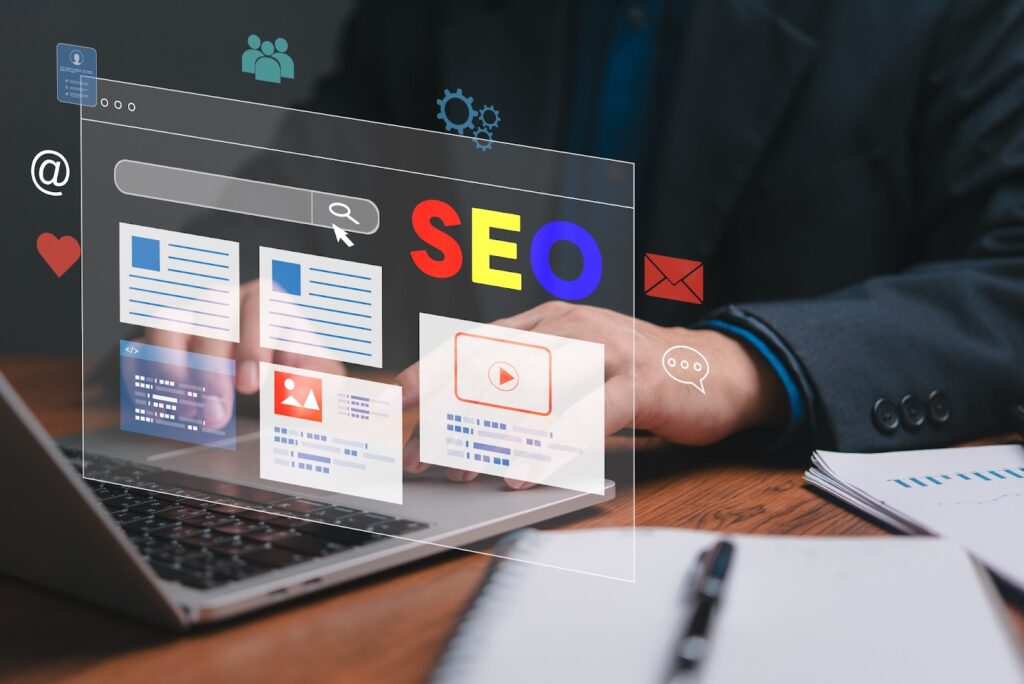A website is the ultimate marketing tool for any business. It’s like a digital banner that can creatively showcase everything about your establishment. With that said, prioritising an SEO-friendly website design is highly important, especially in this day and age.
Here’s everything you need to know about creating an SEO-friendly website design:
Why Is Website Design Crucial for Search Engine Optimisation (SEO)?
SEO is the process of ranking your website on search engines like Google. This usually involves implementing SEO strategies and tools on your website. On-page SEO, technical SEO and keyword optimisation are common solutions for practitioners.
Another effective way is by focusing on the technical side of your website design. While a tad more unconventional, this usually plays a huge role in how well your website performs. Think of it like setting the foundation for your house before decorating it.
All in all, an SEO-friendly website design helps search engine bots crawl your pages easily, contributing to better rankings.
What Makes an SEO-Friendly Website Design?

(Image Source: istockphoto.com)
- Seo-Friendly Content Management System (CMS): You can’t have an SEO-friendly website without the right website builder. CMS’s like WordPress give you access to countless SEO plugins.
They allow you to simplify optimisation—like managing canonical tags and image optimisation. While there are many CMS’s in the market, it’s important to choose one that has strong SEO capabilities.
- Mobile-Friendly Design: A mobile-friendly design is arguably the most important aspect of an SEO-friendly website. It’s a mobile-first world, meaning most users access the internet through their phones.
Google even prioritises mobile-friendly design in its mobile-first indexing. Generally, a mobile-friendly website should fit on all screen sizes, including tablets. This involves using a design that automatically adjusts the layout based on the device used.
- Fast Page Speed: Users tend to stay on websites that load much faster than those that don’t. That’s why page speed has become a major core web vitals metric and ranking factor.
Optimising your JavaScript, CSS and images through techniques like lazy loading keeps users engaged longer, reducing bounce rates. Tools like Google PageSpeed Insights are commonly used to measure and improve site speed.
- Crawlability: Search engines determine your ranking after crawling your website and understanding its content. By using clean codes (HTML5, CSS3, etc.) and proper header tags (H1, H2, etc.), you help search engines interpret your content more efficiently.
Ensuring your robots.txt file and sitemap are correctly set up can also help bots index your page better.
- Structured URL’s: A URL is a web address that leads to your website. It contains unique information like the domain name or scheme (also known as protocol). Structured URLs are much easier to index by search engines.
This includes URLs that creatively integrate keywords to reflect what that page is about. For example, a URL like “https://weave.asia/best-web-design-agency-in-asia/” clearly signals to both users and search engines that the page is about web design.
- Meta Information and Tag Optimisation: Don’t ignore your meta tags, title tags and alt text. These tiny snippets can make a big difference in how search engines interpret your content. Search engines usually use them to understand your page better.
They also act like mini ads, summarising what the page is about to entice users. Plus, using open graph tags helps when your content is shared on social platforms.
The Benefits of Having an SEO-Friendly Website Design

(Image Source: istockphoto.com)
Right off the bat, having an SEO-friendly website can help improve your search rankings. Your website will be ranked higher on search engine results pages (SERPs), increasing your visibility.
More people will come across your website and are more likely to browse your service and products. This naturally leads to higher traffic, which can convert into more leads or sales. An SEO-friendly website design also gives you a competitive edge.
With so much competition going around, having an SEO-friendly website can go a long way. It can help you outrank competitors who have similar offerings but less web presence. Finally, an SEO-friendly site is easier to maintain and scale.
With proper structure and clean code, you can add new content without breaking your site’s performance.
The Bottom Line
Having an SEO-friendly website design is more important than ever. It can help improve your rankings, boost visibility, convert leads and many more. All things considered, it’s also just as important to know how to implement these strategies properly.
So don’t hesitate to ask for help if needed—we have the expertise and experience to get your website to where it needs to be.
Contact us to find out more!











